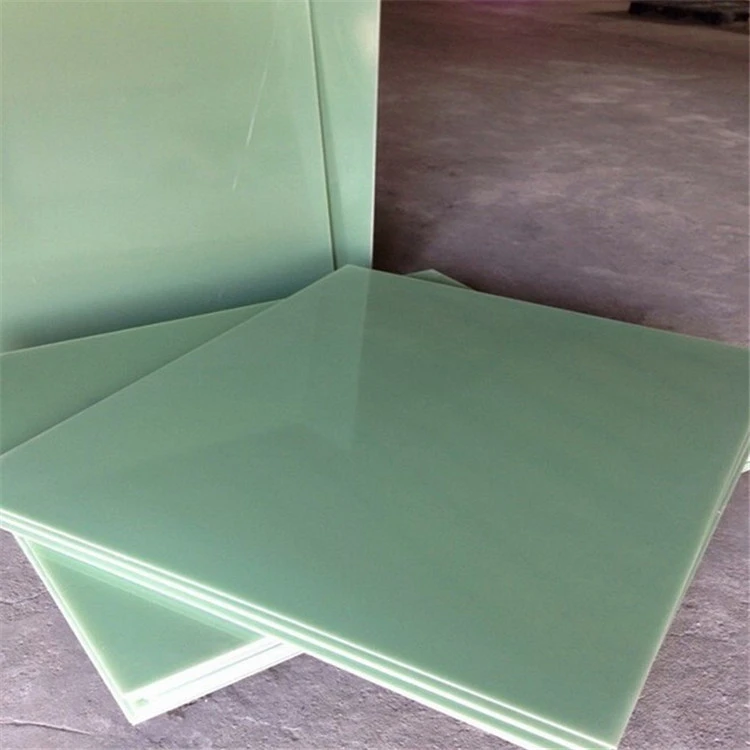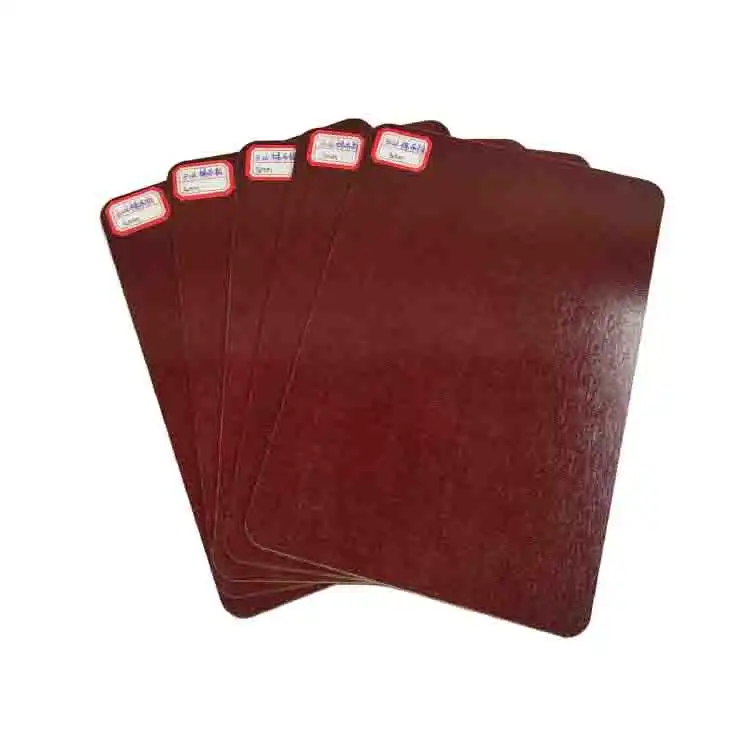In-depth understanding of 3240 epoxy sheet: from material preparation to practical applications
2025-02-11 17:15:18
3240 epoxy sheet is a versatile insulating material that has gained significant traction in various industries due to its exceptional electrical and mechanical properties. This high-performance composite combines epoxy resin with glass fiber reinforcement, resulting in a robust and reliable insulation solution. From its meticulous material preparation process to its wide-ranging practical applications, 3240 epoxy sheet has become an indispensable component in electrical equipment, transformers, and other critical systems. This article delves into the intricacies of 3240 epoxy sheet, exploring its composition, manufacturing techniques, and the multitude of applications that showcase its remarkable capabilities.
Material Composition and Preparation of 3240 Epoxy Sheet
Raw Materials and Their Properties
The foundation of 3240 epoxy sheet lies in its carefully selected raw materials. The primary components include epoxy resin, hardeners, and glass fiber reinforcement. Epoxy resin, known for its excellent adhesion and chemical resistance, forms the matrix of the composite. Hardeners, typically amine-based compounds, are crucial for initiating the curing process and determining the final properties of the sheet. Glass fiber, available in various forms such as woven fabrics or mats, provides mechanical strength and dimensional stability to the composite.
Mixing and Formulation Techniques
The preparation of 3240 epoxy sheet involves precise mixing and formulation techniques. The epoxy resin and hardener are combined in specific ratios to achieve optimal crosslinking during the curing process. Advanced mixing equipment ensures uniform dispersion of components, eliminating air bubbles and potential weak points in the final product. Additives such as accelerators, flame retardants, or colorants may be incorporated to enhance specific properties or meet particular application requirements.
Quality Control Measures
Stringent quality control measures are implemented throughout the material preparation phase. This includes rigorous testing of raw materials for purity and consistency, as well as monitoring of mixing parameters such as temperature, viscosity, and gel time. Advanced analytical techniques, including spectroscopy and thermal analysis, are employed to verify the chemical composition and ensure batch-to-batch consistency. These meticulous quality control procedures are essential for producing 3240 epoxy sheets with reliable and reproducible properties.
Manufacturing Processes and Techniques
Lamination and Layup Methods
The manufacturing of 3240 epoxy sheet involves sophisticated lamination and layup methods. Glass fiber reinforcement is carefully arranged in predetermined orientations to optimize mechanical properties. Multiple layers of resin-impregnated glass fiber are stacked to achieve the desired thickness and strength. Advanced automated systems may be utilized to ensure precise fiber alignment and uniform resin distribution throughout the laminate structure.
Curing and Consolidation
After layup, the 3240 epoxy sheet undergoes a critical curing and consolidation process. This typically involves the application of heat and pressure in specialized equipment such as autoclaves or heated presses. The curing cycle is meticulously controlled to achieve optimal crosslinking of the epoxy resin, resulting in a fully cured and consolidated composite. Factors such as temperature ramp rates, dwell times, and cooling profiles are carefully monitored to ensure consistent material properties throughout the sheet.
Post-Curing and Finishing Operations
To further enhance the properties of 3240 epoxy sheet, post-curing operations may be performed. This involves subjecting the cured sheets to elevated temperatures for extended periods, promoting additional crosslinking and stress relief within the material. Finishing operations such as cutting, machining, or surface treatment may be carried out to meet specific dimensional requirements or improve surface characteristics. These post-processing steps are crucial for achieving the final product specifications and ensuring optimal performance in various applications.

Practical Applications and Performance Characteristics
Electrical Insulation in Power Systems
3240 epoxy sheet excels in electrical insulation applications within power systems. Its high dielectric strength and low dissipation factor make it an ideal choice for insulating components in transformers, switchgear, and other high-voltage equipment. The material's ability to maintain its insulating properties under extreme conditions, including high temperatures and exposure to oils or chemicals, ensures reliable operation in demanding environments. The dimensional stability of 3240 epoxy sheet also contributes to the long-term reliability of electrical systems by minimizing the risk of insulation failure due to thermal cycling or mechanical stress.
Structural Components in Aerospace and Transportation
The exceptional strength-to-weight ratio and fatigue resistance of 3240 epoxy sheet make it a valuable material for structural components in aerospace and transportation applications. It is utilized in the fabrication of aircraft interior panels, radomes, and composite structures that require high mechanical performance and low weight. In the automotive industry, 3240 epoxy sheet finds applications in lightweight body panels, underhood components, and electrical system insulation, contributing to improved fuel efficiency and vehicle performance.
Specialized Industrial Applications
Beyond electrical and structural applications, 3240 epoxy sheet demonstrates versatility in specialized industrial sectors. Its chemical resistance and thermal stability make it suitable for use in corrosive environments, such as chemical processing equipment or offshore platforms. The material's low moisture absorption and dimensional stability are advantageous in precision equipment and instrumentation, where maintaining tight tolerances is crucial. Additionally, 3240 epoxy sheet's excellent machinability allows for the fabrication of complex shapes and components, expanding its potential applications across various industrial sectors.
Conclusion
3240 epoxy sheet represents a pinnacle of composite material technology, offering a unique combination of electrical insulation, mechanical strength, and versatility. From its carefully controlled material preparation to its wide-ranging practical applications, this high-performance composite continues to play a crucial role in advancing various industries. As technological demands evolve, 3240 epoxy sheet remains at the forefront of insulation solutions, providing engineers and designers with a reliable material to meet the challenges of modern electrical and structural applications.
Contact Us
For more information about our 3240 epoxy sheet products and how they can benefit your specific application, please don't hesitate to contact us at info@jhd-material.com. Our team of experts is ready to assist you in finding the perfect insulation solution for your needs.
References
1. Zhang, L., & Wang, Y. (2019). Advanced Manufacturing Techniques for Epoxy-Based Composites in Electrical Insulation. Journal of Composite Materials, 53(15), 2087-2102.
2. Chen, X., et al. (2020). Properties and Applications of 3240 Epoxy Glass Fiber Composite in High-Voltage Equipment. IEEE Transactions on Dielectrics and Electrical Insulation, 27(3), 894-901.
3. Smith, A. B., & Johnson, R. C. (2018). Thermal and Mechanical Characterization of 3240 Epoxy Sheet for Aerospace Applications. Composites Part A: Applied Science and Manufacturing, 108, 23-31.
4. Lee, J. H., et al. (2021). Recent Advances in Epoxy-Based Insulating Materials for Power Transformers. Energy, 214, 118941.
5. Brown, M. E., & Wilson, K. L. (2017). Quality Control Methods in the Production of High-Performance Epoxy Composites. Journal of Applied Polymer Science, 134(22), 44921.
6. Tanaka, T., & Imai, T. (2020). Advances in Nanodielectric Materials for Electrical Insulation Applications. IEEE Electrical Insulation Magazine, 36(1), 30-43.







